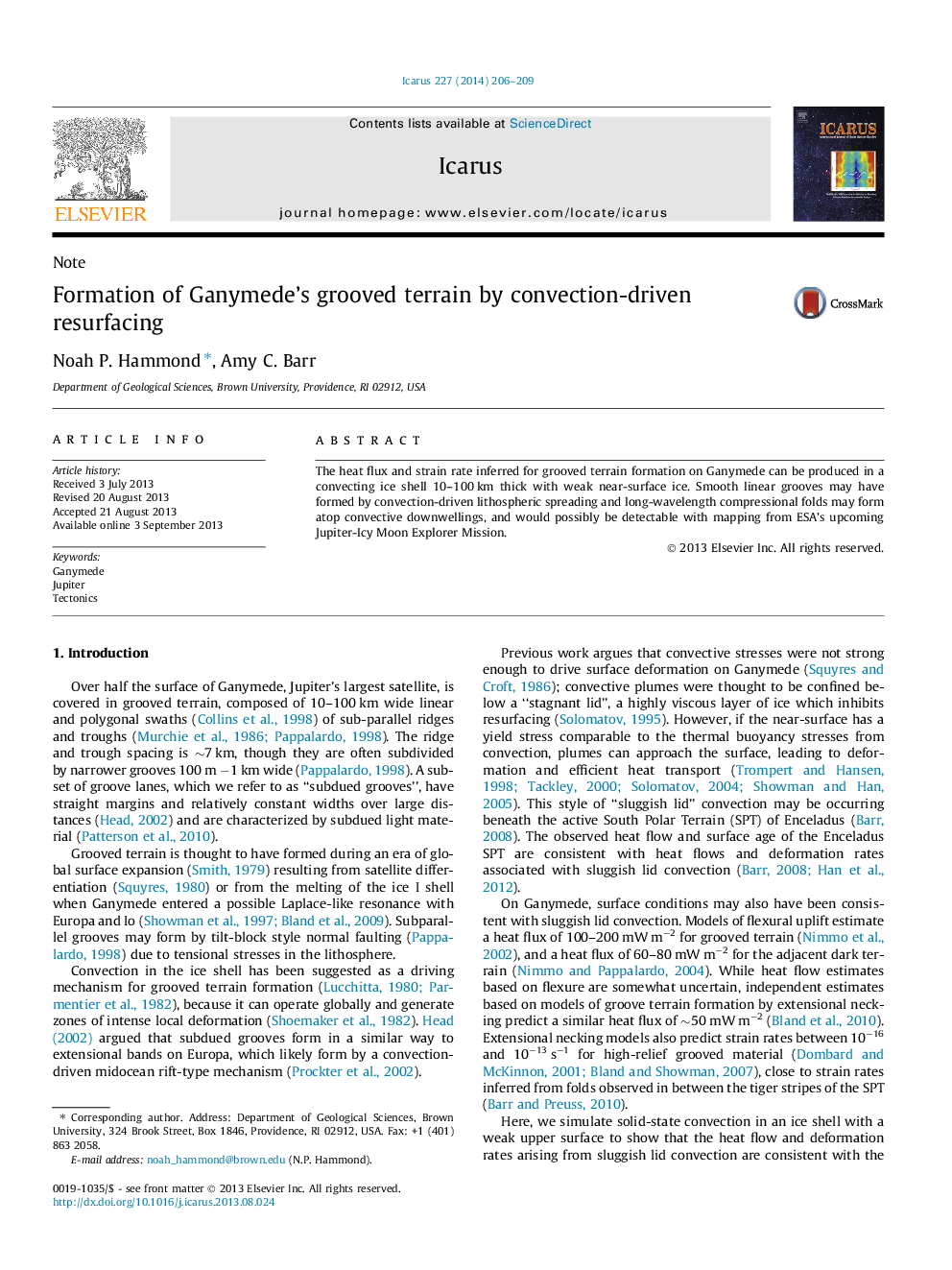| Article ID | Journal | Published Year | Pages | File Type |
|---|---|---|---|---|
| 1773271 | Icarus | 2014 | 4 Pages |
Abstract
The heat flux and strain rate inferred for grooved terrain formation on Ganymede can be produced in a convecting ice shell 10–100 km thick with weak near-surface ice. Smooth linear grooves may have formed by convection-driven lithospheric spreading and long-wavelength compressional folds may form atop convective downwellings, and would possibly be detectable with mapping from ESA’s upcoming Jupiter-Icy Moon Explorer Mission.
Related Topics
Physical Sciences and Engineering
Earth and Planetary Sciences
Space and Planetary Science
Authors
Noah P. Hammond, Amy C. Barr,
